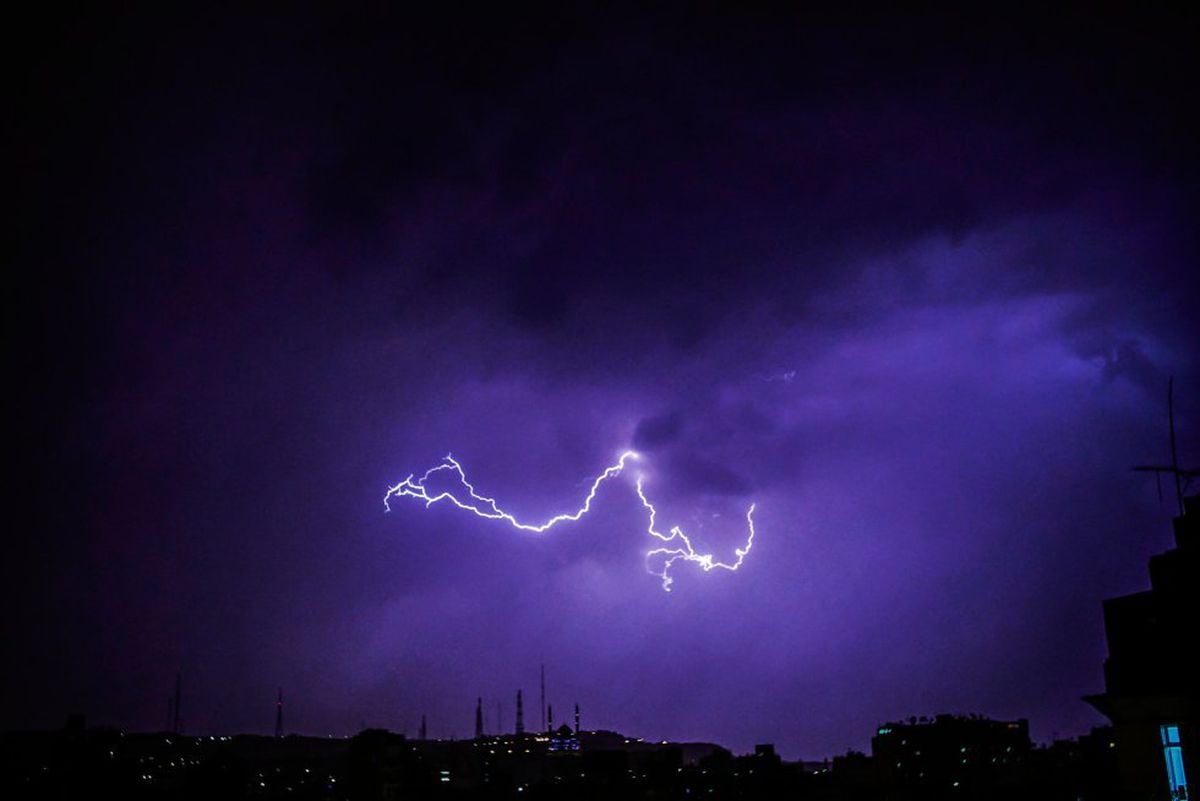As the EU is on track to achieve climate neutrality by mid-century, a mother-and-son team is helping to address a potential hurdle: the limited number of renewable energy sources that will enable that the EU can abandon fossil fuels.
Andriy Lyubchyk is one of the partners in the CATCHER project, which is aimed at diversifying clean energy sources by perfecting a new process that is successfully converting atmospheric moisture into electricity.
The technique involves collecting the tiny charges of static electricity contained in the ubiquitous water vapor molecules in the atmosphere.
This process is known as
hygroelectricity
or moisture electricity.
“With this new source of renewable energy, we believe that we will be able to radically increase the efficiency and possibilities of the transition to clean energy,” says Lyubchyk, CEO of the Portuguese
start-up
Cascatachuva Lda and a chemical engineer at the Lusophone University of Humanities. and Technologies of Lisbon, Portugal.
an old dream
At the beginning of the 20th century, the Serbian-American inventor Nikola Tesla dreamed of producing energy from the air and came to carry out a series of experiments to capture electrical charges from the atmosphere and transform them into electrical current.
Since Tesla's time, the scientific community has deepened its understanding of how electricity is formed and released into the atmosphere, and it has been discovered that water vapor can carry electrical charges.
Such know-how could give a new impetus to the EU, which gets around 22% of its energy from renewable sources.
At this time, it is in the process of confirming that the objective set for the end of this decade with respect to the use of said sources, including hygroelectricity, is increased to 45%.
However, for Europe to be climate neutral before 2050, renewables will have to play an even greater role and, in this regard, hygroelectricity would expand alternative options to oil,
CATCHER, funded by the European Innovation Council's Explorer programme, brings together eight partners from six European countries to explore this possibility.
The general idea of the project may be the same as Tesla's, but the technology used by CATCHER is very different.
To capture energy from atmospheric moisture, the project uses cells similar to those in solar panels, which are made of zirconium oxide, a hard crystalline material.
Zirconium oxide is a ceramic material commonly used in dental implants, sophisticated glass materials, electronics, and coatings for nuclear fuel rods.
According to Svitlana Lyubchik, CATCHER coordinator and Andriy's mother, seven years ago,
A research group began looking at evidence of hygroelectricity by exploring the properties of nanomaterials made of zirconium oxide.
Svitlana Lyubchik is also a chemical engineer at the Lusophone University.
Together with her son, she has undertaken various initiatives to try to exploit this potential.
At this time, the research has reached the point where it has been possible to generate, through an eight by five centimeter plate of its material, about 0.9 volts of electricity in a laboratory with a humidity of approximately 50%. .
This amount of power is comparable to the power output of half an AA battery.
The research has managed to generate the output power of half an AA battery through an eight by five centimeter plate
The team, which is now looking to increase the efficiency of its hygroelectric equipment, hopes that the cells, once perfected, will be able to get the same amount of electricity as photovoltaic cells of the same size.
In addition, they believe that they can be used in a similar way to solar panels: in large-scale photovoltaic parks or as a source of energy for individual use in buildings.
Cells are created by producing tiny, uniform nanoparticles made of zirconium oxide.
These particles are then compressed into a sheet of material of similar structure, which includes a series of channels or capillaries.
According to Andriy Lyubchyk, the nanostructure generates electric fields inside the capillaries that separate the charge from the water molecules absorbed from the atmosphere.
The result is a cascade of physicochemical, physical and electrophysical processes that capture electrical energy.
There is one aspect in which this new technology has an advantage over solar and wind energy.
While the panels and turbines have to be installed in certain points with sunlight and wind, the hygroelectricity cells can be placed anywhere, since there is little variation in humidity levels in the same area.
Of course, they are not necessarily a viable option in all places, since they do require minimum levels of humidity to work.
“For example, if the outside temperature is minus 15 degrees, everything will be frozen and there will be no water in the air,” says Andriy Lyubchyk.
heating and cooling
Andriy Lyubchyk is also coordinating the EU-funded SSHARE project with his mother, which is studying a possible real-world application of hygroelectricity cells in a heating and cooling system.
“By combining the two technologies the system becomes self-sufficient”, says Andriy Lyubchyk.
The heating and cooling system works from a sophisticated radiant panel that can be installed on the ceiling of a room.
Above the panel, perforated pipes lead and supply hot or cold water, depending on whether you want to cool or heat the room.
The panel then radiates heat into (or absorbs from) the room via atmospheric humidity, similar to how heat is released from the skin through sweat.
The system is expected to be able to feed the pumps that circulate the water with the hygroelectricity that is generated by steam that enters and leaves the panel.
According to the research team, this self-sufficient heating system underscores how hygroelectricity can drive the transition to net-zero energy.
“We can contribute to the EU policy on energy independence”, stresses Svitlana Lyubchik.
The research described in this article has been supported by EU funds.
Article originally published in
Horizon
, the European Union Magazine for Research and Innovation.
You can follow
MATERIA
on
,
and
, or sign up here to receive
our weekly newsletter
.









